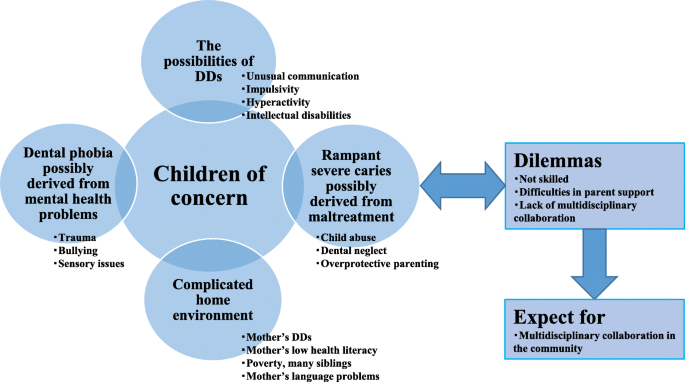If you’re a parent, you know that taking care of your child’s dental health is crucial. But did you know that there is a specialized field of dentistry dedicated solely to children? It’s called pediatric dentistry, and it plays a key role in monitoring the dental development of children from birth through adolescence. Pediatric dentists not only provide dental care for children, but also serve as a vital resource for parents, ensuring that their little ones have the best oral health possible. In this article, we will explore the importance of pediatric dentistry, from the recommended timing of a child’s first dental visit, to the specialized training that pediatric dentists undergo, to the promising career outlook in this field. So, let’s dive in and discover why pediatric dentists are integral to keeping your child’s smile bright and healthy!

Introduction to Pediatric Dentistry
Pediatric dentistry is a specialized branch of dentistry that focuses on providing dental care to children from birth through adolescence. It plays a crucial role in promoting dental health in children and serves as a valuable resource for parents. Pediatric dentists are trained to understand the unique dental needs of children and to provide them with the highest quality of care.
Importance of Monitoring Dental Development
Early Detection of Tooth Decay
One of the primary reasons for monitoring dental development in children is the early detection of tooth decay. Tooth decay can occur as soon as the first tooth comes in, making it essential to start monitoring dental health from an early age. Regular dental check-ups can help identify any signs of tooth decay in its early stages, allowing for timely intervention and treatment.
Preventive Measures
Monitoring dental development also allows for the implementation of preventive measures. Pediatric dentists can provide guidance on proper oral hygiene practices, including brushing and flossing techniques, and educate parents on the importance of a healthy diet for optimal dental health. By encouraging good oral hygiene habits from a young age, pediatric dentists can help prevent dental issues and promote long-term dental health.
Identification of Dental Issues
Monitoring dental development plays a crucial role in identifying any dental issues that may arise. Pediatric dentists are trained to assess and analyze the growth and development of a child’s teeth and jaws. This allows them to detect any abnormalities or irregularities in tooth positioning, eruption sequence, or overall dental health. By identifying these issues early on, pediatric dentists can provide appropriate interventions to address the problems and prevent further complications.
First Dental Visit for Children
Recommended Age for the First Visit
It is recommended that children have their first dental visit after the presence of their first tooth or by their first birthday. The timing of the first visit is crucial as it allows the pediatric dentist to establish a baseline for the child’s dental health and monitor their dental development from an early stage. By starting early, parents can also receive guidance on proper oral hygiene practices and preventive measures to ensure their child’s dental health.
Purpose of the First Visit
The primary purpose of the first dental visit is to introduce the child to the dental office environment and create a positive and comfortable experience. Pediatric dentists are trained to provide a child-friendly environment and use techniques to minimize anxiety and fear. During the first visit, the dentist will conduct a comprehensive oral examination, clean the child’s teeth, and provide guidance on oral hygiene practices. The dentist will also educate parents about the child’s dental development and answer any questions or concerns they may have.
Training and Qualifications of Pediatric Dentists
Completion of Dental School
Pediatric dentists undergo a rigorous educational path to become qualified practitioners. They first complete dental school, where they acquire a comprehensive understanding of general dentistry principles and techniques. This education forms the foundation of their dental knowledge and skills.
Specialized Residency Program
After completing dental school, pediatric dentists undertake a specialized residency program focused on pediatric dentistry. This residency program provides them with advanced training and hands-on experience in managing the dental needs of children. During the residency program, pediatric dentists gain in-depth knowledge about child psychology, behavior guidance, dental development, and pediatric-specific dental procedures. This specialized training ensures that pediatric dentists are well-equipped to provide the highest quality of care to their young patients.

Job Responsibilities of Pediatric Dentists
Diagnosis and Treatment of Oral Diseases
One of the primary responsibilities of pediatric dentists is diagnosing and treating oral diseases in children. They are trained to recognize and manage a wide range of dental conditions, including tooth decay, gum diseases, and oral infections. Pediatric dentists use a combination of clinical examination, radiographic evaluation, and digital imaging to accurately diagnose dental issues in children. Once a diagnosis is made, they develop personalized treatment plans to address the specific needs of each child.
Monitoring Dental Development
Pediatric dentists have a crucial role in monitoring the dental development of children. They keep track of the eruption and shedding of teeth, ensuring that they occur within the normal sequence and time frame. By closely monitoring dental development, pediatric dentists can identify any deviations or abnormalities that may require intervention. They also assess tooth positioning and jaw development to detect any orthodontic issues that may need to be addressed.
Surgical Procedures
Pediatric dentists are skilled in performing a variety of dental surgical procedures. This can include extractions, dental restorations, and the management of oral injuries. They also have training in administering anesthesia and sedation techniques to ensure the comfort and safety of their young patients during surgical procedures.
Emergency Dental Care
Pediatric dentists are prepared to provide emergency dental care to children. Dental emergencies, such as knocked-out teeth or severe toothaches, can occur at any time. Pediatric dentists are trained to respond to these emergencies promptly and effectively, providing immediate relief and treatment. Their specialized training equips them to handle emergency situations while minimizing pain and discomfort for the child.
Career Outlook for Pediatric Dentists
Projected Growth in Job Demand
The career outlook for pediatric dentists is highly favorable, with a projected growth in job demand. According to the U.S. Bureau of Labor Statistics, there is an estimated 20% growth in employment for dentists, including pediatric dentists, from 2014 to 2024. This growth can be attributed to various factors, including the increasing population of children and the growing awareness of the importance of oral health in children.
Reasons for Favorable Outlook
Several factors contribute to the positive career outlook for pediatric dentists. Firstly, there is a continuous demand for dental services for children, ensuring a steady stream of patients. Additionally, advancements in dental technology and treatment techniques have made dental care for children more effective and accessible. This has led to an increased demand for pediatric dentists who are specialized in providing comprehensive dental care to children.

Methods for Monitoring Dental Development
Clinical Examination
Clinical examination is an essential method for monitoring dental development in children. Pediatric dentists thoroughly examine the oral cavity, including the teeth, gums, and supporting structures. They assess the condition of the teeth, look for signs of tooth decay, and evaluate the alignment and eruption sequence of the teeth. Clinical examination allows pediatric dentists to gather valuable information about the child’s dental health and identify any issues that may require intervention.
Radiographic Evaluation
Radiographic evaluation is another important tool for monitoring dental development in children. It involves taking dental X-rays to obtain detailed images of the teeth and jaws. X-rays can provide valuable information about the eruption and positioning of permanent teeth, detect any abnormalities or dental anomalies, and help plan orthodontic treatments if necessary. Pediatric dentists use radiographic evaluation in combination with clinical examination to gain a comprehensive understanding of a child’s dental development.
Use of Digital Imaging
Digital imaging techniques have revolutionized the field of pediatric dentistry. With the use of digital imaging, pediatric dentists can capture high-resolution, detailed images of the teeth and jaws. These images can be manipulated, enhanced, and stored digitally, allowing for more accurate diagnoses and treatment planning. Digital imaging also minimizes radiation exposure, making it safer for young patients.
Dental Models
Dental models, or casts, are physical replicas of a child’s teeth and jaws. Pediatric dentists use dental models to assess tooth positioning, examine occlusion, and plan orthodontic treatments if necessary. Dental models provide a tangible representation of a child’s dental structures, allowing pediatric dentists to analyze and evaluate the dental development more effectively.
Eruption and Shedding of Teeth
Normal Sequence of Tooth Eruption
The eruption of primary (baby) teeth follows a relatively predictable sequence. The central incisors, or front teeth, are usually the first to erupt around the age of 6 to 10 months. This is followed by the lateral incisors, first molars, canines, and second molars. By the age of three, most children have a full set of primary teeth. The eruption of permanent teeth begins around the age of six, starting with the first molars and incisors. The primary teeth gradually shed as the permanent teeth take their place.
Age at Which Primary Teeth Fall Out
The primary teeth generally begin to fall out around the ages of 6 to 7 years. This process continues until the age of 12 or 13 when the last primary teeth, usually the second molars, are replaced by permanent teeth. The shedding of primary teeth is a natural part of dental development and allows for the eruption of permanent teeth.

Signs of Dental Issues in Children
Delayed Tooth Eruption
Delayed tooth eruption refers to a situation where teeth do not emerge within the expected time frame. While the timing of tooth eruption can vary between children, a significant delay may indicate an underlying issue. Delayed tooth eruption can be caused by factors such as genetics, nutritional deficiencies, or systemic conditions. Pediatric dentists play a vital role in identifying and addressing delayed tooth eruption to ensure proper dental development.
Abnormal Tooth Development
Abnormal tooth development can manifest in various ways, such as tooth discoloration, enamel defects, or irregular tooth shape. These abnormalities can be a result of systemic conditions, genetic disorders, or environmental factors. Pediatric dentists are trained to identify and manage abnormal tooth development to prevent further complications and promote optimal dental health.
Irregularities in Tooth Positioning
Irregularities in tooth positioning can include crowded teeth, misaligned teeth, or teeth that are not properly spaced. Orthodontic issues can impact a child’s bite, speech, and overall dental health. Pediatric dentists are trained to identify early signs of orthodontic issues and can refer patients to orthodontic specialists if necessary. Early intervention can help address irregularities in tooth positioning and minimize the need for extensive orthodontic treatment later in life.
Importance of Regular Dental Check-Ups
Monitoring of Dental Growth and Development
Regular dental check-ups are essential for monitoring the growth and development of a child’s teeth and jaws. Pediatric dentists can track the eruption of teeth, assess tooth positioning, and detect any abnormalities or issues that may require intervention. By monitoring dental growth and development, pediatric dentists can ensure that any potential problems are identified and addressed promptly, leading to better long-term dental health outcomes.
Preventive Measures for Dental Issues
Regular dental check-ups also allow for the implementation of preventive measures to avoid dental issues. Pediatric dentists can provide guidance on proper oral hygiene practices, including brushing and flossing techniques, and educate parents on the importance of a healthy diet for optimal dental health. Additionally, pediatric dentists can apply dental sealants, provide fluoride treatments, and offer advice on injury prevention methods to reduce the risk of dental issues in children.
In conclusion, pediatric dentistry plays a critical role in promoting dental health in children and ensuring their long-term oral well-being. By monitoring dental development and providing comprehensive care, pediatric dentists can detect and address dental issues in their early stages, promoting optimal dental health outcomes for children. Regular dental check-ups, starting from an early age, are crucial for maintaining dental health, preventing dental problems, and establishing good oral hygiene habits. With their specialized training and qualifications, pediatric dentists are well-equipped to provide the highest quality of dental care to children.
